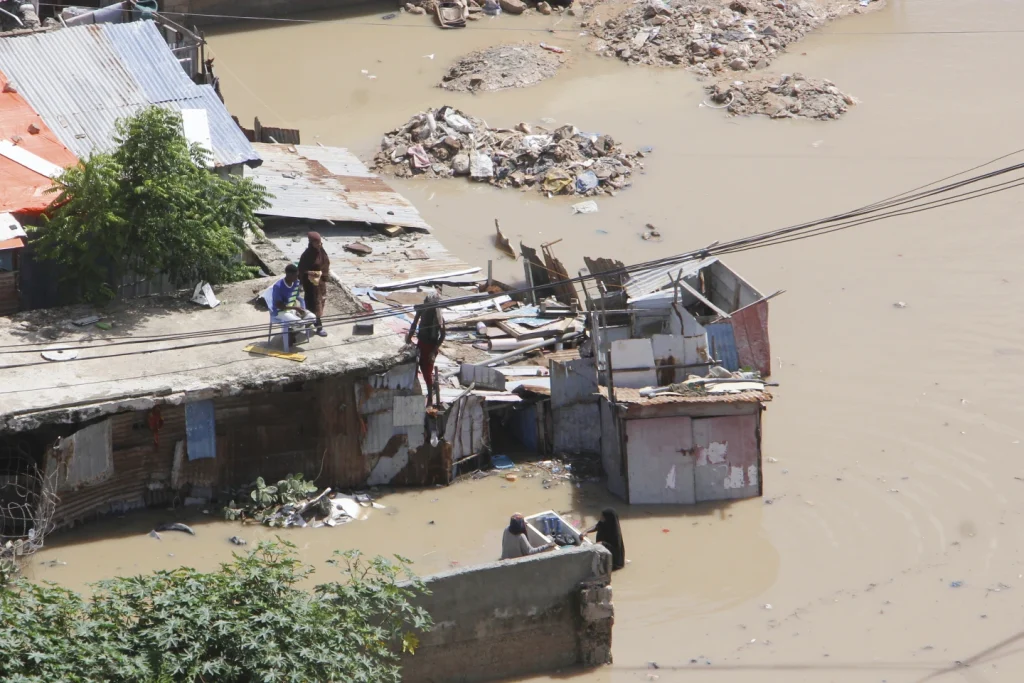At least seven people were confirmed dead following hours of relentless rainfall that submerged vast areas of Mogadishu on Friday night, cutting off major roads, displacing residents, and disrupting critical infrastructure.
The downpour, lasting nearly eight hours, overwhelmed the capital’s drainage system, with water levels rising to waist height in several districts. The storm brought the city to a standstill, as homes crumbled and transport routes were rendered impassable.
Aden Abdulle International Airport temporarily halted operations due to the flooding, though flights have since resumed, officials said.
Abdinasir Hirsi Idle, spokesperson for the Banadir regional administration, said that rescue efforts were underway and warned that the death toll may increase. “Nine houses collapsed, and at least six main roads suffered serious structural damage,” he noted.
Many residents sought refuge on rooftops overnight, awaiting assistance. “We spent the night out in the cold. Some elderly people are still trapped, and we haven’t eaten since yesterday,” said a resident from one of the worst-hit neighborhoods.
The Somali Disaster Management Agency has yet to publish an official fatality count, but field teams have been dispatched to assess the damage.
Somalia continues to face unpredictable climate shocks—from prolonged droughts to sudden floods—that place immense pressure on its urban infrastructure. Friday’s storm brought over 115 millimetres of rainfall, according to the Ministry of Energy and Water, which has issued alerts for possible flash floods in other parts of the country.
As communities begin the recovery process, the latest flood highlights once again the urgent need to bolster Somalia’s urban planning, climate response, and infrastructure investment.



